
Sign Up
Want to receive a newsletter to learn more about KuneKune pigs and other educational information? Sign up to have them delivered right to your inbox.
We look forwarded to sending you some great info.
KuneKune Breed Standard: Explained
Understanding breed standards is crucial for anyone interested in purebred registered KuneKune pigs. This article explains why they matter and how they impact the health and longevity of breeds. We will further explain the IKKPS KuneKune Breed Standards so that you can improve your herd and recognize various breed standards.
Breed standards are a set of guidelines that define the ideal characteristics of a particular breed of animal. For those interested in raising purebred registered KuneKune pigs, understanding breed standards is crucial. This article explores the importance of breed standards and how they impact the health and longevity of breeds.
We will further explain and give examples of the breed standard so
that you can better understand the breed standards.
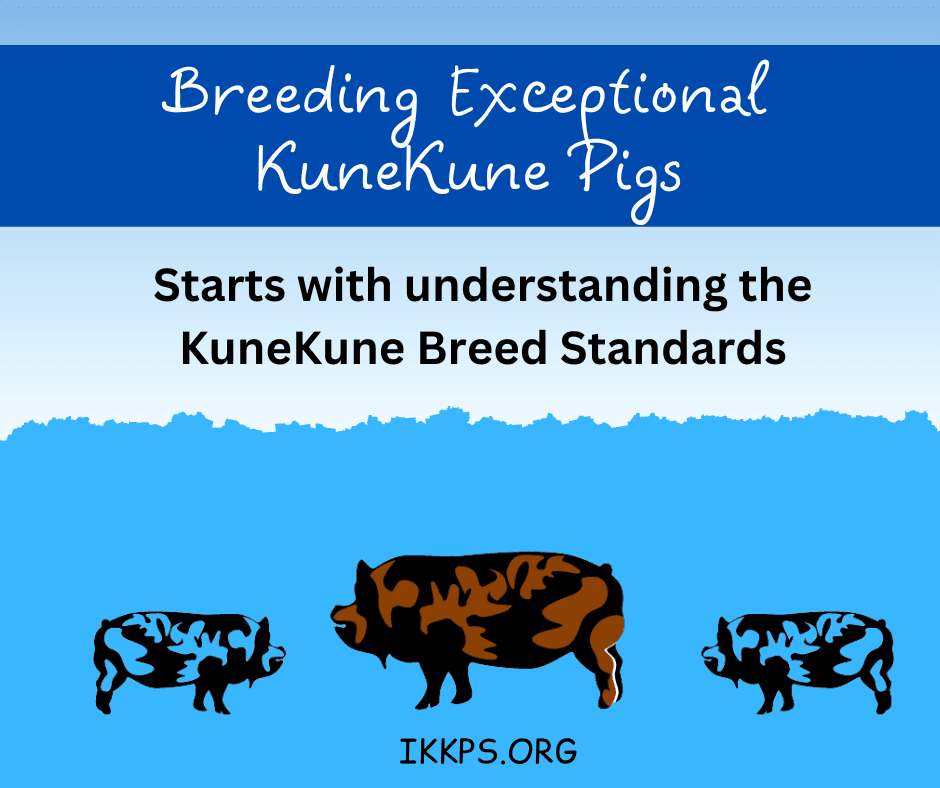
Quick links to sections on this page
What are breed standards?
Breed standards are guidelines that define the ideal characteristics and conformation expectations of a particular breed of animal. These guidelines cover everything
from physical appearance and size to temperament and behavior. Breed standards are developed by breed associations and are used to maintain the integrity of
the breed and ensure that it remains true to its original purpose. For those interested in raising purebred registered KuneKune pigs, understanding breed standards is crucial to ensure the health and longevity of the breed.
Breed standards serve as guidelines for breeders and goals that they should aspire to in their breeding programs. While most Registries will list the breed standards no one fully explains what they mean. We are going to explore each and every aspect of the KuneKune Breed Standards of Excellence and give examples.
The importance of breed standards in maintaining breed health and longevity.
Breed standards play a critical role in maintaining the health and longevity of a breed. By adhering to these guidelines, breeders can ensure that their animals are healthy, well-tempered, and capable of performing the tasks for which they were originally bred. For example, the KuneKune breed standards say that the back should be level to slightly arched with a firm top line. By trying to achieve these goals if you have a KuneKune with a poor unlevel top line, you may not want to breed from this animal. For the best results, it is better to breed two pigs that have good top lines instead. Improving the offspring over their parents should be a goal of every breeder. At times this will happen and at other times, it will not.
Additionally, breed standards can help prevent the dilution of a breed's unique characteristics, ensuring that it remains distinct and recognizable. Overall, understanding and adhering to breed standards is essential for anyone interested in raising purebred registered KuneKune pigs or any other breed of animal.
How breed standards impact breeding decisions.
Breed standards are a set of guidelines that specify the physical and behavioral characteristics of a breed. These guidelines are used by breeders to make informed decisions about which animals to breed to produce offspring that meet or exceed the standards. The ultimate goal of every breeder should be to produce offspring that are superior to their parents.
Following breed standards helps breeders ensure that their animals are healthy, well-tempered, and capable of performing the tasks they were originally bred for. This, in turn, helps maintain the health and longevity of the breed while preserving its unique characteristics. Therefore, understanding and adhering to breed standards is crucial for making informed breeding decisions and ensuring the long-term health and viability of a breed.
The role of breed standards in showing and judging purebred animals.
Breed standards play a crucial role in showing and judging purebred animals, including KuneKune pigs. The IKKPS judges will use the videos submitted to compare them to the breed standards. These standards are used to evaluate animals based on their physical and behavioral characteristics and to identify the best representatives of the breed. Animals that meet or exceed breed standards are more likely to win awards and be recognized as high-quality specimens. This can be important for breeders who want to highlight their animals and demonstrate their breeding expertise.
Entering a KuneKune show and hearing what the judge says is a fantastic way to learn more about conformation and give you an unbiased opinion of how your pig measures up to the breed standards. This is fun and educational and will help you improve your breeding program. You will develop an "eye" for conformation.
Additionally, adherence to breed standards helps to maintain the integrity of the breed and ensure that it remains true to its original purpose and characteristics. With KuneKunes being so versatile this means they still are efficient grazing pigs, have good conformation, and are well suited for show pigs, breeding, and meat animals.
The benefits of adhering to breed standards for both breeders and consumers.
Adhering to breed standards has advantages for both KuneKune pig breeders and consumers. For breeders, it ensures that their animals are considered high-quality specimens that have the potential to win awards and show titles, which can enhance their reputation and business. It also helps to maintain the integrity of the breed, ensuring that it remains true to its original purpose and characteristics.
For consumers who understand the breed standards, it means that they can trust that the animal they are purchasing is a genuine representation of the breed, with all the desired physical and behavioral characteristics. This can lead to healthier and longer-lived animals, as well as a more satisfying ownership experience.
IKKPS Breed Standards of Excellence
Below are the IKKPS standards for KuneKunes pigs for you to review and in the next section we will learn more about the breed standards and what they mean for
each one to better help you understand the goals that you are reaching for. It is important to note that every judge will view and understand these Breed Standards differently although each is given the same Breed Standards of Excellence.
Head: The head should be rounded with nice spacing between the eyes.
Wattles: 2 wattles are the breed standards, and it is the goal we all strive for. Wattles should be well attached, and placement is under the jowl.
Ears: Ears can be slightly inclined forward, floppy, and folded are acceptable. They should not block the eyes.
Neck: The neck should be short and thick.
Back: Should be level or slightly arched, strong firm top line.
Tail: high to medium-high setting just at the top of the rump and slightly level with the top line.
Legs: Strong, well-boned legs that are straight with strong pasterns.
Feet: level and slightly closed
Body: Chest should be wide to moderate, level shoulders and rounded hams.
Eyes: should have unblocked vision
Snout: moderate to short snout that has a thickness to it and is slightly dished.
Colors: any color on the color chart is acceptable.
Temperament: Calm, easy to handle, curious and friendly.
Females: should have even teat space on each side with an even number of teats.
Males: Should have evenly spaced teats with the same number on each side, testicles should be easy to view when mature, and males should reflect a male-like
physique.
Health: The condition must be that the pig can easily run or walk comfortably. Not overweight and not underweight.
Now in reviewing these, it is helpful but, if you are new to the breed or showing, further explanation is needed to fully understand these breed standards.
Detailed Explanation of the KuneKune Pig Breed Standards
We will go in order of the standards or some may have two as the examples are easy to see in those photos. listed above to further explain each item on the KuneKune Breed Standards.
KuneKune Head and Eyes
Standard: The head should be rounded with good spacing between the eyes.
Eyes: should have unblocked vision
When looking at piglets you can estimate how their head will look when they are adults based on the shape of the head and the distance between the eyes. This is a skill that will develop as time goes by. It is reasonably predictive when you are determining if a piglet is worthy of breeding or not.
The eyes should be visible and not blocked by floppy ears.
piglet examples

Rounded Head Shape with good distance between eyes
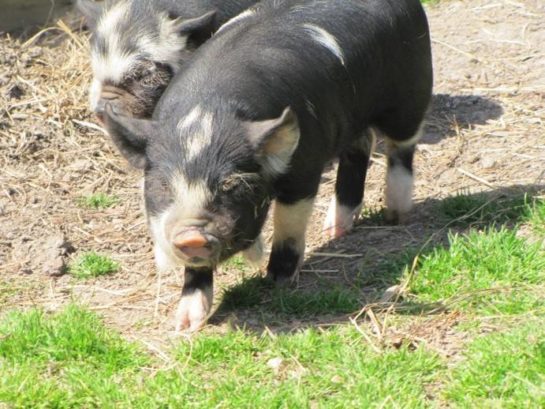
Oblong Head Shape with poor distance between eyes
Adult examples

Round Head - Good Head
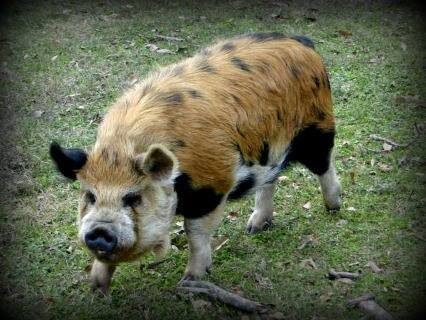
Oblong Head - Poor Head and you can notice poor pasterns as well.
KuneKune Wattles
Standard: 2 wattles are the breed standards, and it is the goal we all strive for. Wattles should be well attached, and placement is under the jowl.
While most breeders prefer 2 wattles, that is not what we are always given in our litters. KuneKunes can be born with 2 wattles, 1 wattle, or no wattles at all. Some registries take a strong stance on this topic and do not allow any non-wattled pigs to even be registered. At IKKPS, we know that even in New Zealand and the UK some KuneKunes just do not have two wattles. IKKPS accepts both wattled and non-wattled for breeding pig registrations. It is the discretion of the breeder to determine if an unwattled pig is worthy of reproducing or not.
Wattles are fleshy appendages that hang just under the jowl of KuneKune pigs and it is a breed characteristic.

To learn more about KuneKune Wattles please see our article under the blog.
KuneKune Ears
Standard: Ears can be slightly inclined forward, floppy, and folded are acceptable. They should not block the eyes.
KuneKune pigs will have prick ears, folded ears, and floppy ears. All are correct but, what the breed standard is referring to is the floppy ears that cover the eyes.
examples
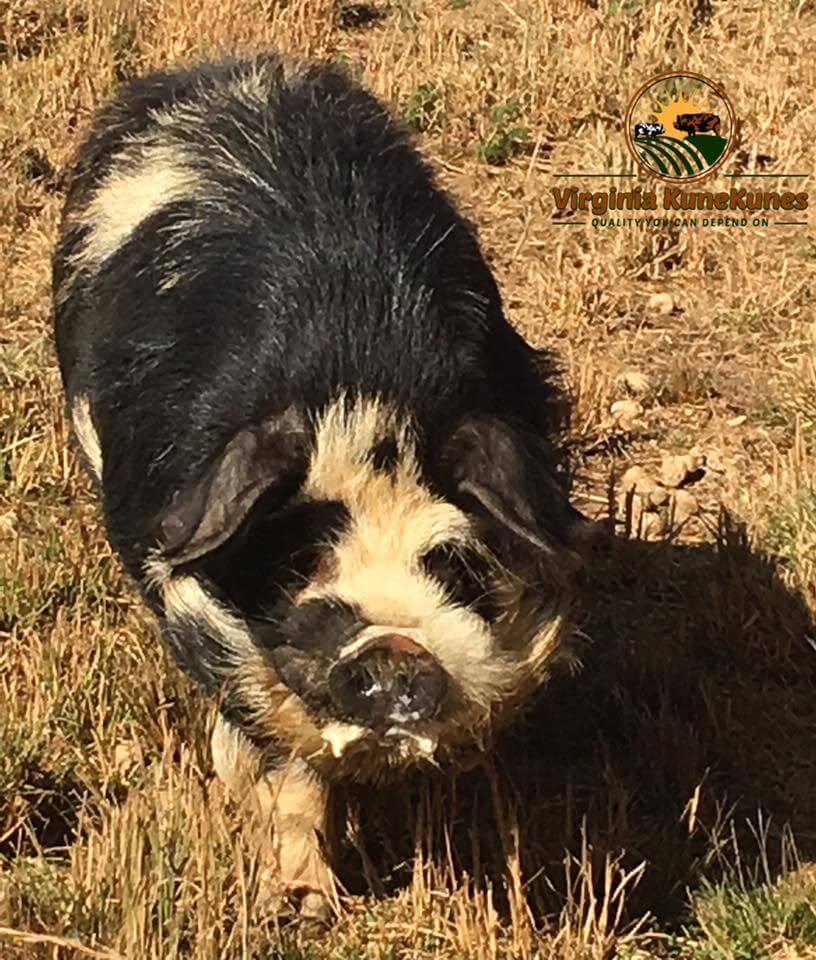
This is an example of floppy ears on a KuneKune
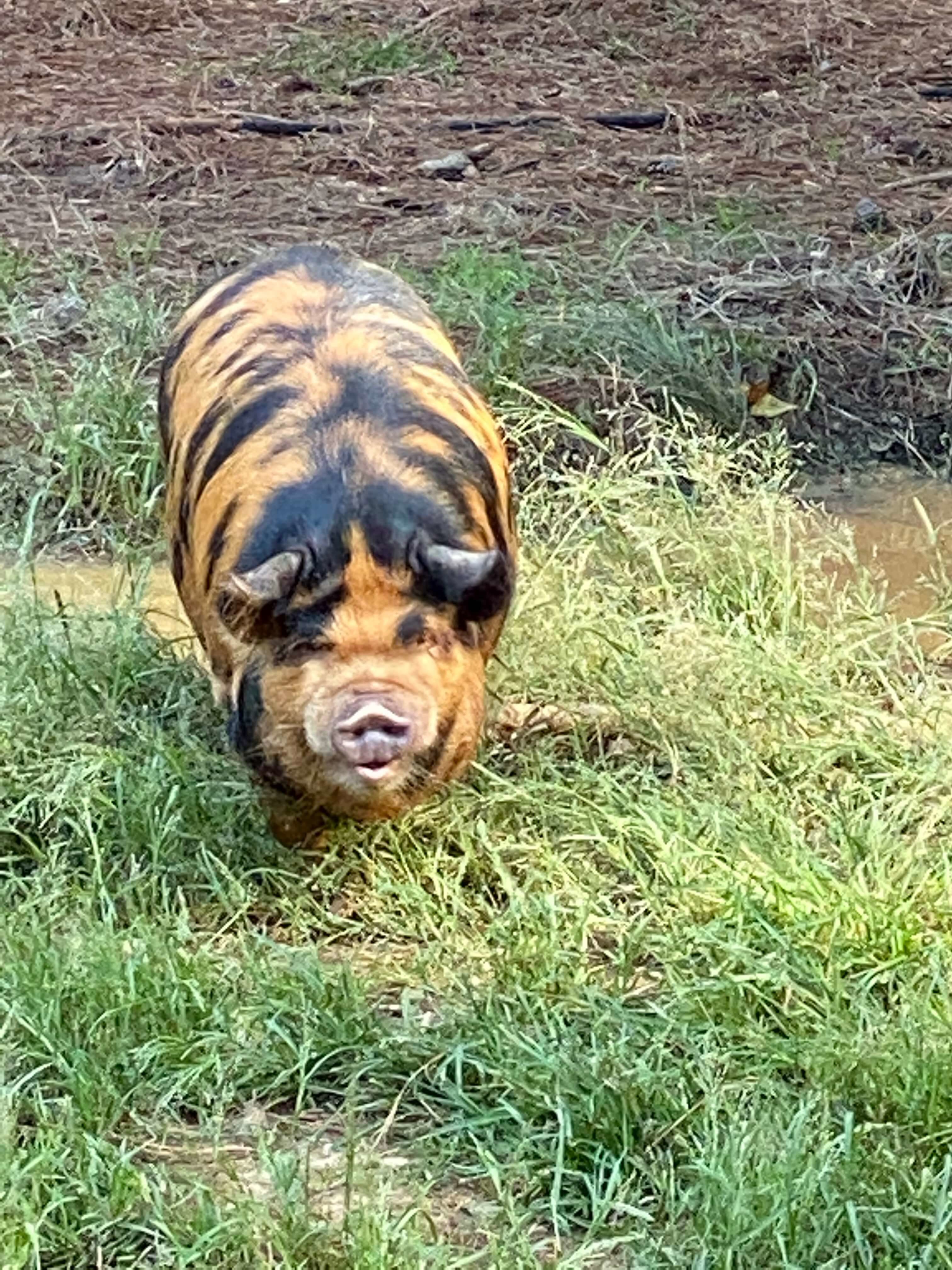
This is an example of folded ears in a KuneKune

This is an example of pricked ears on a KuneKune
KuneKune Neck
Standard: Neck: The neck should be short and thick.
This is usually pretty easy to understand. Short and thick. Usually longer necks are seen more in animals that are kept leaner.
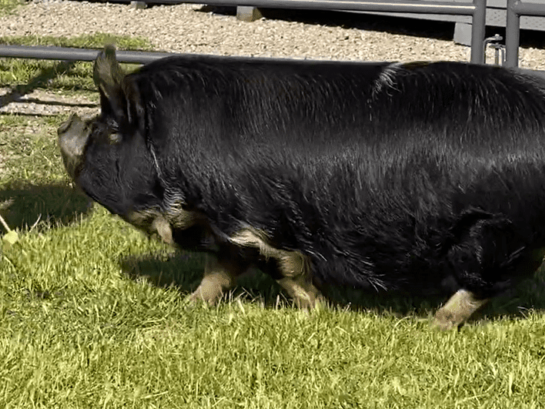
Shorter Neck: photo compliment of Lisa Montoya, Hogs n Kisses KuneKunes
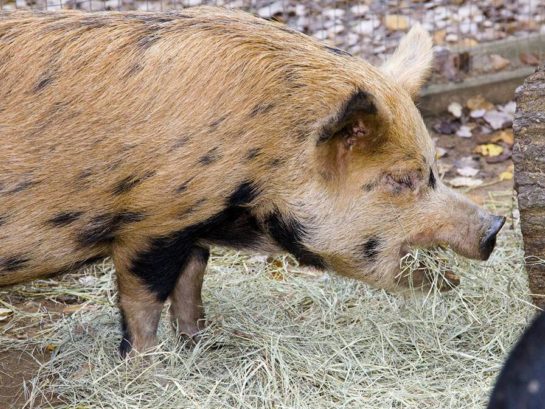
Longer neck: this is from one of the imports a long time ago
KuneKune Back
Standard: Back: Should be level or slightly arched, strong firm top line.
Often called toplines, the back should be firm and level or just slightly arched. It is important to note with top lines how they are holding their heads can affect how an image looks. Also while in the growing phases, they may look different at times.
examples

Nice topline that is level and firm
photo courtesy of Brandy Kwan of Kwanderosa Farms.

Slightly arched topline
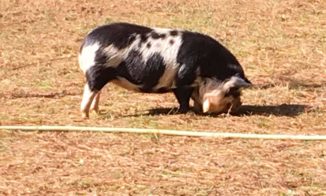
Poor topline
KuneKune Tail Set
Standard: Tail: high to medium-high setting just at the top of the rump and slightly level with the top line.
The tail should be high when looking at the top line. Almost even with the back or just slightly level.
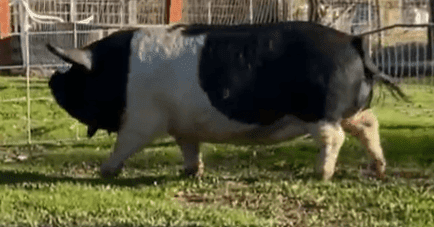
High Tail: photo compliment of Lisa Montoya, Hogs n Kisses KuneKunes
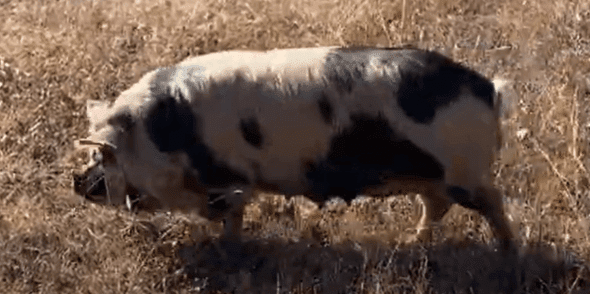
Medium tail set: photo compliment of Elizabeth Parsons, Parsons Ranch
KuneKune Legs and Feet
Standard: Legs: Strong, well-boned legs that are straight with strong pasterns.
Standard: Feet: level and slightly closed
KuneKunes need nice bones to carry their heavier bodies. Their rear legs should be straight and their pasterns should not be touching the ground. Their feet (hooves) should not be spread open but, they should be slightly closed.
examples

You can see a nice bone on this boar.
photo courtesy of Brandy Kwan of Kwanderosa Farms.
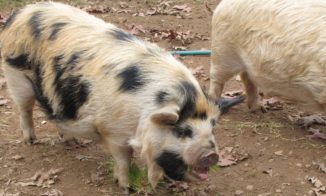
Good pasterns - see how high up on the toes
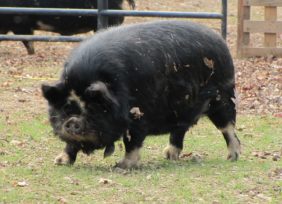
Poor pasterns
KuneKune Tail Set
Standard: Body: Chest should be wide to moderate, level shoulders and rounded hams.
As a KuneKune is short and fat they should have depth to their chest and between their shoulders. Level shoulders on each side and the Hams should be nice and rounded. When you hear the word ham it also is commonly known as the rump.

In this, you can see a nice rounded rump.
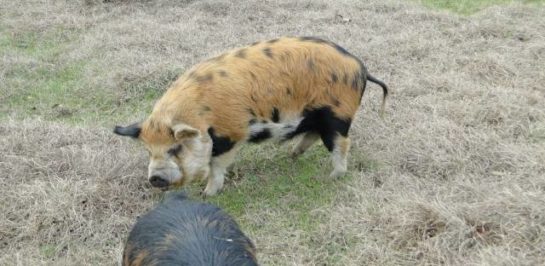
Notice the low tail set and a more pointed rump or ham
KuneKune Snout
Standard: Snout: moderate to short snout that has a thickness to it and is slightly dished.
KuneKunes have a unique snout when compared to other pig breeds. Their snouts are short to medium length and have a nice thickness to them. Extreme snouts look like they barely have a snout at all. While they look super cute that way it can lead to issues with breathing and jaw deformities. A dished snout is seen on mature adults and as in the example below you can see that dished means slightly upturned. This is easier to see in side views of the pig.
examples

Nice short snout
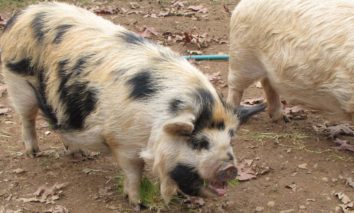
This pig has a thinner snout and is more medium.
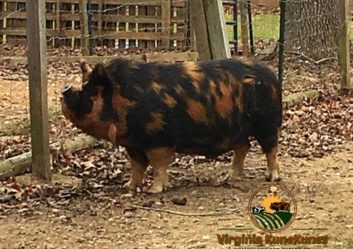
See how the snout is dished or slightly turned up
KuneKune Colors
Standard: Body: Colors: any color on the color chart is acceptable.
See our examples on the KuneKune color chart. All colors on the pig color chart are acceptable and no preference when judging is given during evaluation to one color over the other.
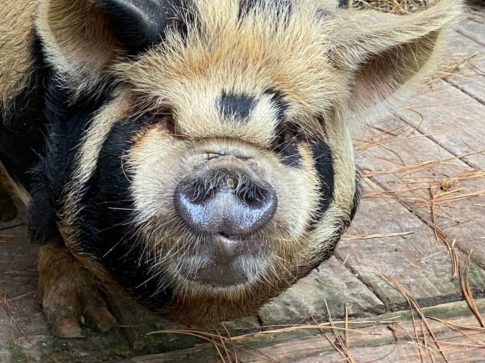
This is a ginger/black female with a nice short snout and a nice rounded head shape to her with pricked ears.
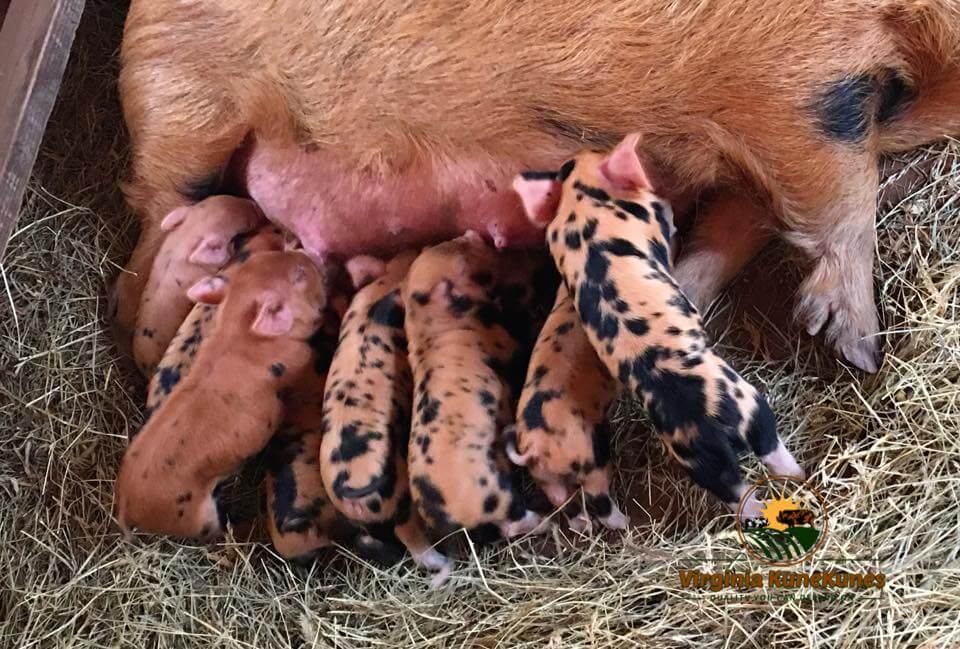
These show the various shades of ginger with some ginger/blacks
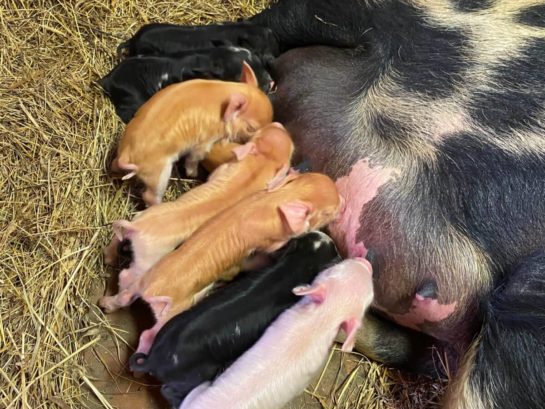
In this photo is solid gingers, cream, and black/whites

You can see brown/white, ginger/black and brown/ginger
KuneKune Temperament
Standard: Temperament: Calm, easy to handle, curious and friendly.
KuneKune pigs are known for their ease of handling. Great pigs for first time owners as they are friendly, docile and easy going.
examples

Ziggy jumped in the kiddie pool
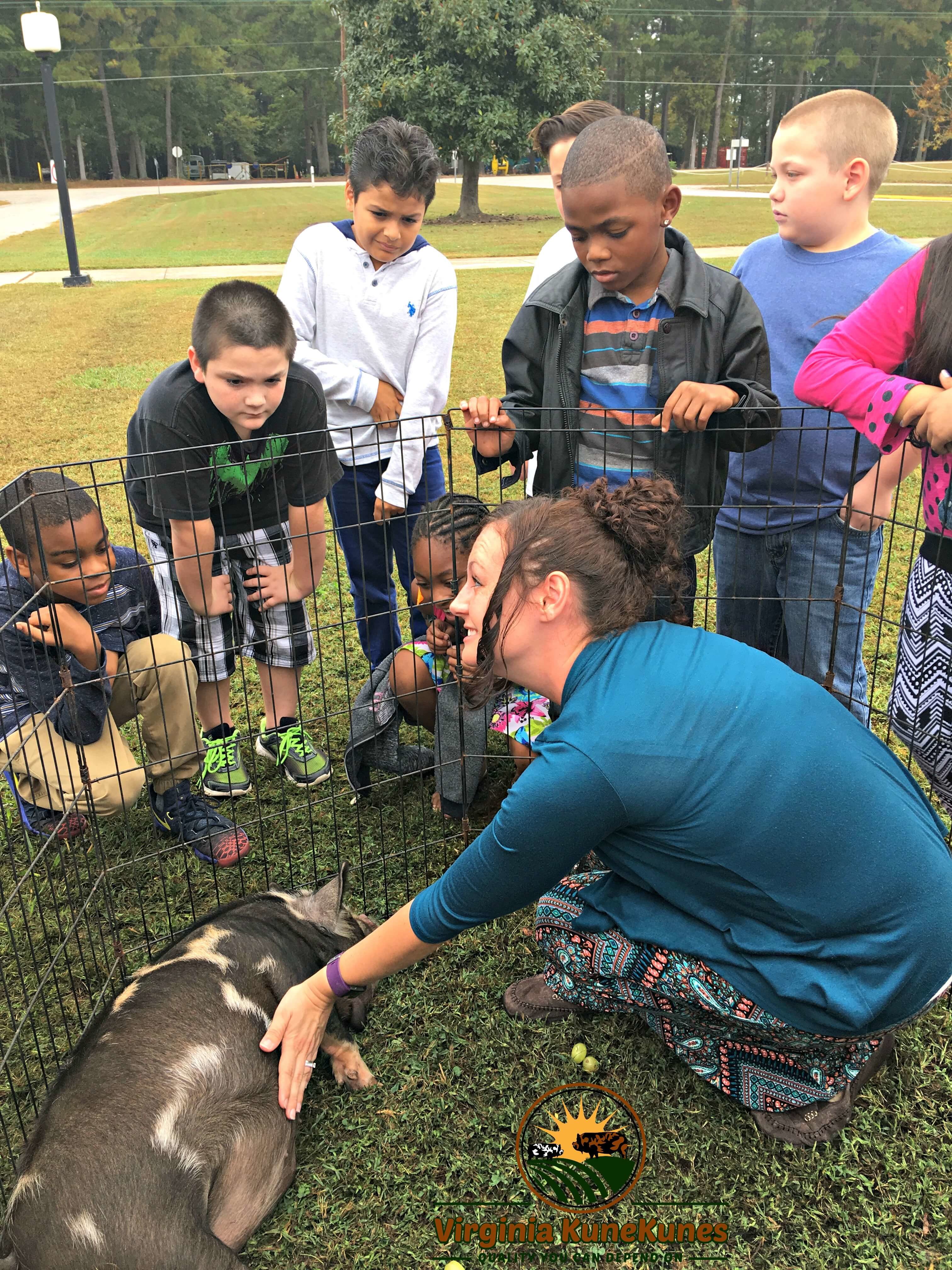
KuneKunes can be used to help teach children
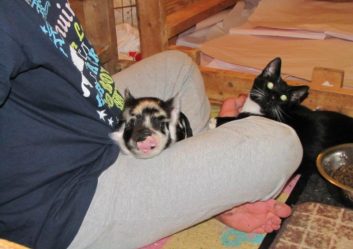
Get along well with other animals
KuneKune Females and Males
Standard: Females: should have even teat space on each side with an even number of teats.
Standard: Males: Should have evenly spaced teats with the same number on each side, testicles should be easy to view when mature, and males should reflect a male-like physique.
Males and females should have nice-spaced even teats. Piglets will stack when nursing. A piglet on the lower teat and one on the higher one and this helps them be able to nurse better. The reason the males need to have evenly spaced teats is for genetic contributions to the offspring.
Testicles should be easy to see and even. Males should look thick, heavy-boned, and masculine.
Females should still have good bones but, will not have that buffer body like a male.
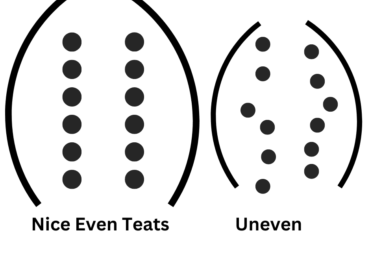
This example shows even teats and uneven teats
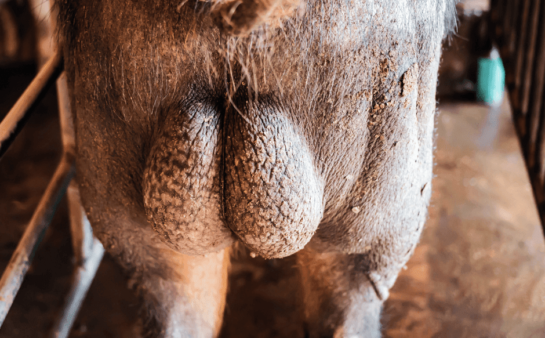
Male pig testicles - even and same size (not a KuneKune)
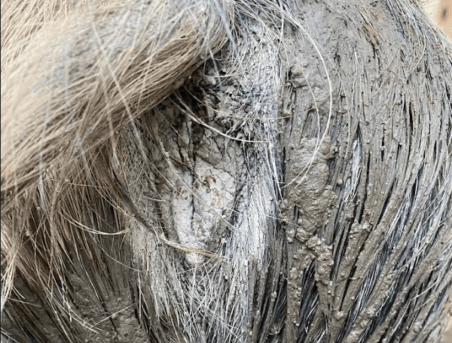
Female KuneKune Vulva
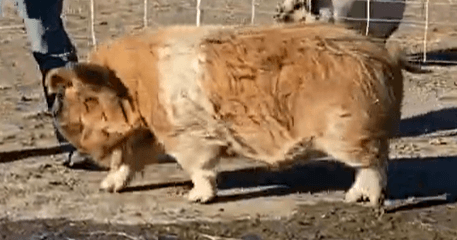
This is a good example of a male KuneKune pig. Thick bone, broad chest, big rounded head, dished snout, and a true male body that is thick.
photo courtesy of Brandy Kwan, Kwanderosa Farms

While this female and a bit younger, you can see the difference in the heaviness of the body style in this example
KuneKune Health
Standard: Health: The condition must be that the pig can easily run or walk comfortably. Not overweight and not underweight.
The term "KuneKune" translates to "fat and round" in the Maori language, which is where this breed of pig originates from in New Zealand. However, it is important to note that while this breed should not be kept too lean, it should also not be excessively overweight. Finding the right balance is crucial for their health. They should be able to move freely and run when needed.
examples
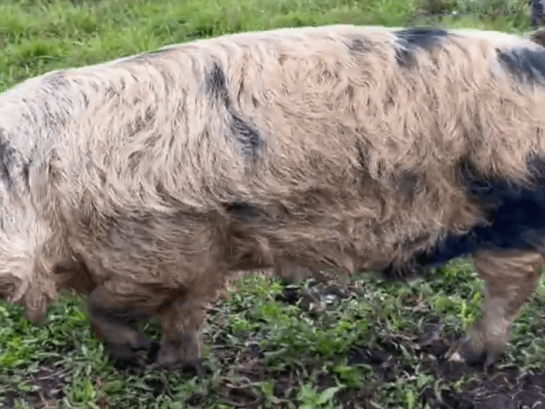
This is an example of a leaner and not in good body condition.
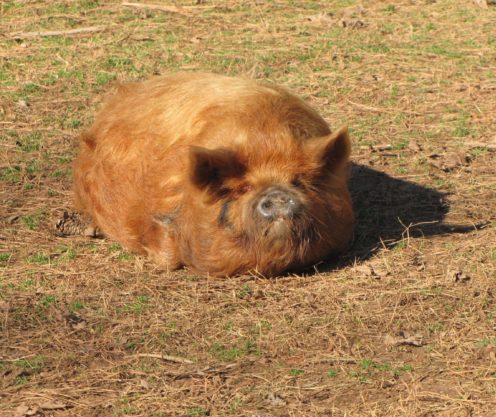
This pig is overly conditioned and fat.
Summary
IKKPS hopes that you found this information helpful in learning more about the KuneKune Breed Standards in the explanations. We host meetings with our membership frequently on the topic of conformation so that our breeders can learn to recognize these conformation traits to improve their herd and, also so that they know what is worthy of being registered as a breeding pig and what is best used as a meat animal. We invite you to join IKKPS so that you can learn with IKKPS and all our wonderful members.
Registry Office
17500 Hamilton Arms Court Dewitt, VA 23840